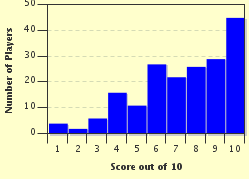Quiz Answer Key and Fun Facts
1. You enter the Strand at its western end from a large square, dominated by a tall column topped by a statue of an admiral. Which square is this?
2. Which railway terminus stands on the south side of the Strand near its western end?
3. One of London's leading hotels stands on the south side of the Strand, adjacent to a theatre with the same name. Which hotel is this?
4. 399 Strand, on the north side of the street, is the shop of Stanley Gibbons. What kind of hobbyists does this shop appeal to?
5. Next to King's College on the south side of the Strand is a splendid eighteenth-century building which extends as far south as the Embankment and as far west as the approach to Waterloo Bridge. Once upon a time you might have gone there for a copy of your birth certificate: today you may go to see art collections. What is this building?
6. On the north side of the Strand, stretching back to the Aldwych crescent, is Bush House. Which organization began to operate from this building in 1940?
7. On an island in the middle of the Strand stands a church designed by Sir Christopher Wren. From the middle of the twentieth century it has been particularly associated with the Royal Air Force. Which church is this?
8. 216 Strand, on the south side, is the address of Twining's, who have been around since the early eighteenth century. What do Twining's sell?
9. On the north side at the eastern end of the Strand is a big turreted Gothic building. High above its main entrance are statues of Jesus, Solomon and King Alfred the Great. If you're there on the second Saturday in November, you may see the Lord Mayor of London arrive in his coach for a ceremonial meeting with the Lord Chief Justice of England. What is this building?
10. At the extreme eastern end of the Strand (or the western end of Fleet Street, to be exact), on the boundary of the cities of London and Westminster, is a monument surmounted by the heraldic griffin of the City of London. What name is given to this spot?
Source: Author
TabbyTom
This quiz was reviewed by FunTrivia editor
spanishliz before going online.
Any errors found in FunTrivia content are routinely corrected through our feedback system.

